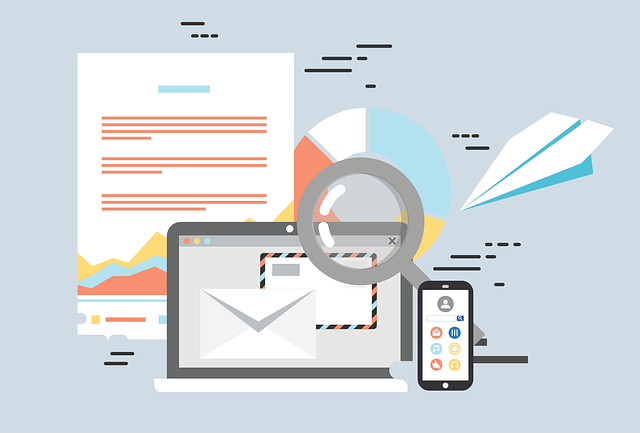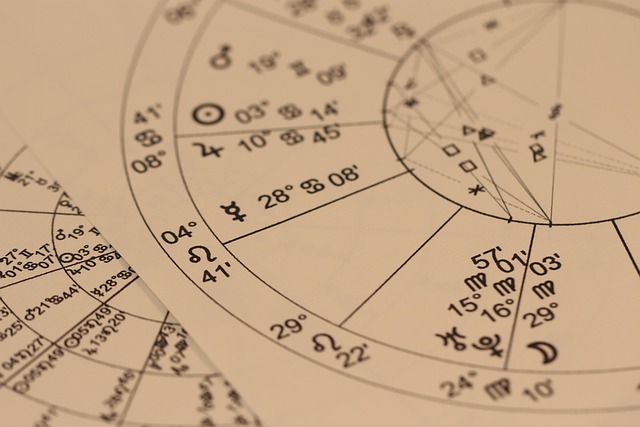What Is TradingView Auto Chart Patterns: Complete Guide for Traders
Author: Jameson Richman Expert
Published On: 2025-11-13
Prepared by Jameson Richman and our team of experts with over a decade of experience in cryptocurrency and digital asset analysis. Learn more about us.
What is tradingview auto chart patterns and how can this feature speed up your technical analysis, improve trade signals, and integrate with automated trading systems? This article answers those questions in depth. You’ll learn what the Auto Chart Patterns feature on TradingView does, how it detects patterns, how to use it practically (including alerts and webhooks), plus limitations, accuracy considerations, and proven workflows that combine pattern signals with risk management and bots.

Table of contents
- What are auto chart patterns?
- How TradingView detects chart patterns (basic mechanics)
- Common patterns the tool finds and what they mean
- Step-by-step: enabling and configuring Auto Chart Patterns in TradingView
- Using alerts and webhooks to automate responses
- Integrating pattern signals with trading bots and exchanges
- Accuracy, reliability, and common pitfalls
- Practical strategies and examples
- Backtesting, metrics, and how to validate patterns
- Resources and further reading
What are auto chart patterns?
Auto chart patterns are algorithmic detectors that scan price series and mark classical technical patterns automatically on a chart — e.g., head & shoulders, double tops/bottoms, triangles, wedges, and channels. On TradingView, the "Auto Chart Patterns" indicator (and various community scripts) identifies candidate patterns in near real-time so traders don’t have to manually draw trendlines or search multiple timeframes. Essentially, it converts pattern recognition — a labor-intensive, subjective task — into repeatable, programmable signals.
Knowing what is tradingview auto chart patterns helps you decide how to use it: as a visual aid, a source of trade ideas, or a component of an automated strategy. It is not a magic bullet but a productivity multiplier when combined with filters, confirmations, and sound money management.
How TradingView detects chart patterns (basic mechanics)
Automated pattern detection usually relies on a few algorithmic steps:
- Pivot detection: Identify local highs and lows using pivot algorithms or fractal rules (X bars left / right).
- Trendline fitting: Connect pivots to form trendlines, channels, and potential pattern shapes (e.g., left shoulder, head, right shoulder).
- Geometric checks: Test shape geometry and ratios — e.g., symmetry for head & shoulders or slope thresholds for wedges.
- Break confirmation: Optionally wait for a close beyond a neckline or trendline to confirm a breakout.
- Noise filtering: Require minimum pattern size, timeframe, or volume thresholds to reduce false positives.
TradingView’s built-in or community scripts implement combinations of these techniques. The reliability depends on the chosen parameters (pivot sensitivity, minimum bars, tolerance for deviations) and the asset/timeframe you apply them to.

Common patterns the tool finds and what they mean
Pattern names vary, but most implementations search for the classic, well-documented chart patterns. Understanding them helps you interpret the signals correctly:
- Head and shoulders / Inverse head and shoulders: Reversal pattern; break of neckline suggests trend change. See Investopedia’s chart pattern overview for definitions and variations: Investopedia — Chart Patterns.
- Double top / Double bottom: Reversal patterns with price rejection at similar highs/lows; break of the middle support/resistance is the confirmation.
- Triangles (ascending, descending, symmetrical): Continuation or reversal potential depending on context; breakout direction and volume matter.
- Flags & Pennants: Short consolidation continuing the prior move; typically continuation patterns.
- Wedges and Channels: Can be reversal or continuation depending on slope and breakout.
For academic context on why patterns may work, see the technical analysis overview at Wikipedia: Wikipedia — Technical analysis.
Step-by-step: enabling and configuring Auto Chart Patterns in TradingView
Here’s a practical workflow to get started with Auto Chart Patterns on TradingView.
1. Open your TradingView chart
Log in to TradingView and open the symbol and timeframe you want to analyze (e.g., BTCUSD on 4H or EURUSD on 1H).
2. Add the Auto Chart Patterns indicator
- Click the "Indicators" icon (or press /).
- Search for "Auto Chart Patterns", "Pattern", or similar terms. TradingView hosts both built-in pattern tools and community scripts that provide auto-detection.
- Select the indicator from the list and add it to the chart.
Note: Community scripts vary — read the description and reviews to choose one that meets your needs.
3. Tune indicator settings
Typical settings to adjust include:
- Pivot sensitivity (higher = fewer, larger patterns; lower = many small patterns).
- Minimum pattern size (price movement threshold).
- Volume filter (require increased volume for breakouts).
- Timeframe scope (apply to the current timeframe or scan multiple TFs if supported).
4. Visuals and labeling
Turn on labels, breakout lines, and projected targets (if available). Visual clarity reduces analysis time and false interpretation.
5. Save presets
Save settings as a preset so you can apply consistent detection across symbols. Consistency aids backtesting and performance measurement.
Using alerts and webhooks to automate responses
One major advantage of automated pattern detection is the ability to trigger alerts when patterns form or confirm. TradingView alerts can be configured to fire on indicator conditions and support webhook POST requests, enabling immediate handoffs to automation stacks.
Creating an alert for a detected pattern
- Right-click on the chart indicator label or open the "Alert" menu (bell icon).
- Set "Condition" to the indicator’s event (e.g., "Pattern Detected" or a specific label like "Head and Shoulders - Confirmed").
- Choose alert frequency (once, every time, etc.).
- Customize the message (TradingView supports template variables like {{ticker}}, {{interval}}, and custom JSON you design).
- Enter a webhook URL to forward the alert to your server or automation endpoint.
- Save the alert.
TradingView’s official documentation explains how to configure alerts and webhooks: TradingView — Creating Alerts.
Example webhook body
Use a custom JSON message so your webhook consumer can parse the alert reliably. Example template you might enter in TradingView alert:
{
"event": "pattern_detected",
"symbol": "{{ticker}}",
"interval": "{{interval}}",
"pattern": "Head and Shoulders",
"price": "{{close}}",
"time": "{{time}}"
}
Your webhook server should validate incoming requests, handle duplicates, and enforce rate limits. For building secure webhook endpoints and handling events properly, see this implementation guide: Webhook events docs & secure implementation (guide).

Integrating pattern signals with trading bots and exchanges
Once TradingView sends pattern alerts via webhook, you can route them to an execution engine or trading bot that places orders on an exchange using the exchange’s API. This allows near real-time reactions to pattern confirmations.
Steps to integrate into an automated trading workflow
- Set up a reliable webhook receiver (serverless function, cloud endpoint, or dedicated server).
- Validate and parse TradingView alerts and map pattern types to trade rules (entry, stop, target, size).
- Implement confirmations or safety checks (e.g., require volume spike, RSI filter, or multi-timeframe confirmation).
- Connect to exchange APIs securely (use API keys with proper permissions and IP restrictions).
- Implement risk management: position sizing, stop-loss, take-profit, and trade limits per day.
- Log trades and outcomes for continuous improvement and backtesting.
If you’re evaluating auto-trading solutions and bots, this comprehensive guide explains architecture and options: Best Auto Crypto Trading Bot — Ultimate Guide.
Exchanges and account links
To experiment with live markets you’ll need exchange accounts. Here are popular options where you can create accounts (useful for automated trading):
For traders involved in multiple markets (crypto, forex), consider curated signal sources and strategies: Most Accurate Forex Signals & Proven Strategies. For staying informed on asset fundamentals alongside patterns, see daily market commentary like: Bitcoin price news & market analysis.
Accuracy, reliability, and common pitfalls
Auto pattern detectors can accelerate analysis, but understanding limitations is critical to avoid poor trades:
- False positives: Automated detectors sometimes mark incomplete or noisy formations as valid patterns. Many “patterns” never reach their target.
- Timeframe sensitivity: Patterns on smaller timeframes have lower reliability and are more subject to noise.
- Repainting and retrospective bias: Some scripts visually draw patterns only after they are fully formed (look-ahead bias). Prefer tools that offer conditional alerts at the moment of confirmation.
- Liquidity and slippage: In low-liquidity markets, breakouts may fail or suffer from slippage that wipes out profit potential.
- News & fundamentals: Technical patterns can be invalidated by sudden news; always check economic calendar events or major announcements before assuming pattern success.
To mitigate these issues:
- Require a confirmed close beyond breakout lines and volume confirmation.
- Combine patterns with momentum indicators (RSI, MACD) or moving averages for trend context.
- Use multi-timeframe confirmation: a breakout on 1H that aligns with a breakout on 4H/1D is stronger.
- Monitor risk per trade and set stops a priori, not greedily after the fact.
Practical strategies and examples
Below are concrete strategies using auto chart patterns. These are educational examples — backtest and demo-trade before risking capital.
Example 1 — Breakout follow-through (swing trading)
Objective: Catch momentum after pattern breakout with confirmation.
- Timeframe: 4H or Daily.
- Pattern: Symmetrical triangle identified by Auto Chart Patterns.
- Entry: Place a buy order when price closes above the upper trendline on increased volume (e.g., volume > 1.2x average of last 20 bars).
- Stop-loss: Below the breakout candle’s low or under the lower trendline by X ATR.
- Target: Measured move equal to triangle height projected from breakout point, or scale out at moving average resistance levels.
Example 2 — Reversal confirmation (head & shoulders)
Objective: Identify trend reversals with high probability setups.
- Timeframe: Daily preferred; 4H acceptable.
- Pattern: Head & shoulders or inverse detected and labeled by the indicator.
- Entry: Wait for the close below (or above for inverse) the neckline on strong volume. Optionally wait for a retest of the neckline as resistance/support.
- Stop-loss: Above the right shoulder peak or below the trough for inverse H&S.
- Target: Distance from head to neckline projected downward from breakout point.
Example 3 — Automated reaction via webhook + bot
Objective: Lower reaction time to pattern confirmations using automation.
- Configure TradingView alert on the chosen pattern with webhook URL pointing to your automation endpoint.
- Webhook server validates message, applies a filter (e.g., RSI < 30 for buys or MACD cross confirmation).
- If filters pass, the server sends an order to exchange API (size by fixed risk % or Kelly-derived fraction).
- Server posts trade status back to an audit log and optionally notifies you through SMS or Telegram.
Want a step-by-step guide to bot setups and architecture? See the auto trading bot guide: Best Auto Crypto Trading Bot — Ultimate Guide.

Backtesting patterns and measuring performance
Backtesting pattern-based strategies is harder than indicator-based ones because many pattern detectors are not coded as Strategy objects that can trade automatically in TradingView’s Strategy Tester. Still, you can:
- Use Pine scripts that convert pattern detections to strategy entries/exits (some community scripts do this).
- Export pattern occurrence timestamps and perform offline backtests by replaying historical price sequences with your trade rules.
- Measure key metrics: win rate, average R:R (reward:risk), maximum drawdown, expectancy (E = win_rate * avg_win - loss_rate * avg_loss).
- Test across multiple assets and timeframes to evaluate robustness; patterns that work on many symbols are more likely to be structural.
Track these KPIs and be wary if a pattern’s apparent success is driven by data-snooping or curve-fitting.
Practical checklist before trusting an automated pattern signal
- Is the breakout confirmed by a daily/4H close beyond the neckline or trendline?
- Is volume supporting the breakout (relative to recent average)?
- Does multi-timeframe analysis agree (higher timeframe trend not strongly opposing)?
- Are there upcoming events that could cause volatility (economic data, earnings)?
- Is your order size consistent with your risk rules and the asset’s volatility?
Advanced tips and pro-level optimizations
- Combine with order flow and VWAP: For intraday setups, looking at volume profile or VWAP can help avoid false breakouts.
- Adaptive stop sizing: Use ATR-based stops instead of fixed pip/point distances to account for volatility.
- Model ensemble: Use multiple pattern detectors and require a majority agreement before taking action, reducing indicator-specific false positives.
- Risk time-weighting: Reduce position size during market hours with historically larger spreads/slippage (e.g., holiday sessions).

Accuracy claims and what research says
Empirical research on chart patterns finds mixed results — some patterns offer edge in specific markets/timeframes, but performance is inconsistent. Your own backtests and out-of-sample tests are the best way to quantify real-world performance. For conceptual background on patterns and their limitations see the general technical analysis literature: Wikipedia: Technical analysis, and pattern discussions on Investopedia (Investopedia Chart Patterns).
Operational considerations: logging, monitoring, and safety
When relying on auto-detected patterns for live trades or automation, operational reliability matters as much as strategy quality:
- Log every alert, webhook payload, decision, and execution for audit and debugging.
- Implement idempotency to avoid duplicate executions on repeated alerts.
- Monitor system health and set alerts for failed webhooks, API rate limits, and unexpected rejections.
- Keep emergency kill-switch controls that can pause all bot activity if markets become pathological.
Use cases: who benefits most from Auto Chart Pattern detection?
- Active traders: Speed up scanning and reduce time spent drawing manual trendlines.
- Swing traders: Identify high-probability structure-based setups across many symbols faster.
- Algo traders & developers: Use the detections as inputs to multi-factor strategies and automated systems.
- Educators and learners: Visual aids help trainees recognize and learn pattern anatomy.

Examples of real-world workflows (one-page blueprint)
Here is a short blueprint that ties together detection, validation, and execution.
- Add Auto Chart Patterns to watchlist symbols (daily + 4H).
- Create alerts for "Pattern Confirmed" and send to webhook.
- Webhook server parses payload, checks volume > 1.2x, RSI confirmation, and 4H trend agreement.
- If checks pass, server computes size by fixed percent risk and places OCO (one-cancels-other) orders on exchange API.
- Record trade result and update ML model or rule set monthly to tune filters.
Further reading and trusted resources
To deepen your understanding and maintain high-quality implementations, consult authoritative resources:
- TradingView alerts and webhook documentation: TradingView — Alerts
- Technical analysis overview: Wikipedia — Technical analysis
- Chart patterns primer: Investopedia — Chart Patterns
- Implementation and webhook security guide: Webhook events docs & secure implementation
- Automated trading bot architecture & practical tips: Auto Crypto Trading Bot — Guide
- Market insight and signal strategy examples for forex and crypto: Most Accurate Forex Signals & Strategies
- Combine technical patterns with timely market commentary, e.g., updates on Bitcoin price: Bitcoin price news & market analysis
Final checklist before you trade on Auto Chart Pattern signals
- Have you backtested the exact indicator and parameter set on the target market?
- Are alert rules and webhook endpoints tested and secure?
- Is your execution engine prepared to handle slippage, partial fills, and API errors?
- Is your position sizing aligned with your maximum acceptable drawdown?
- Are you logging every event and ready to review performance periodically?

Conclusion
Understanding what is tradingview auto chart patterns helps you decide how to use it: as an accelerator for manual analysis, a signal generator for discretionary trading, or a source of trade events for automated systems. Automated pattern recognition can save time and detect opportunities across multiple symbols and timeframes. However, accuracy varies with settings, timeframes, and market conditions — so combine pattern signals with confirmations (volume, indicators, multi-timeframe agreement) and robust risk management. For automation, use TradingView alerts + webhooks to integrate into bots or execution engines, and follow secure webhook and API practices.
If you want to build a complete automated pipeline, start by reading implementation guides and bot architecture resources (linked above), open accounts on exchanges to test live execution (Binance, MEXC, Bitget, Bybit), and iterate systematically.
Want help building a reliable TradingView -> webhook -> bot pipeline, choosing the right indicator parameters, or backtesting pattern strategies on your watchlist? Ask and I’ll provide a tailored checklist and example code snippets to get you started.